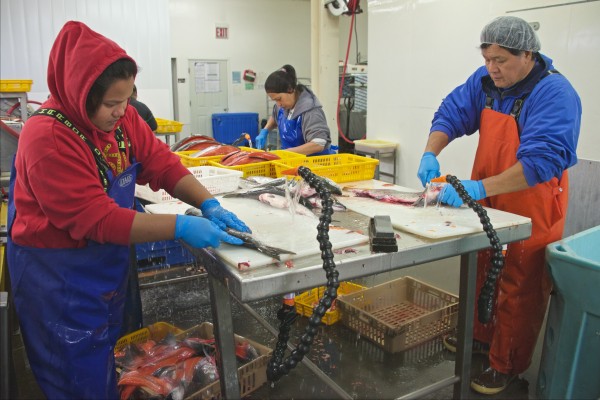Manufacturing partnership comes to Alaska
January 7, 2016
Deborah Mercy
907-274-9698

A new five-year federal grant to the Southwest Alaska Municipal Conference will support the development of small manufacturing businesses in Alaska, starting with the seafood industry.
SWAMC will work with Alaska Sea Grant on the initial stages of the project. Other partners include two Alaska regional development organizations: the Southeast Conference and the Anchorage Economic Development Corporation.
“We are beginning with our manufacturing strengths. In Alaska that is fisheries and seafood processors,” said Erik O’Brien, the SWAMC economic development specialist who directs the new Manufacturing Alaska Extension partnership, MAKE. “Initially we will focus on services provided by the Alaska Sea Grant Marine Advisory Program.”
Alaska Sea Grant will teach seafood processor training at the University of Alaska Fairbanks Kodiak Seafood and Marine Science Center.
“We have a pilot processing plant and seafood laboratory where we conduct hands-on training, education and technical assistance,” said Quentin Fong, seafood marketing specialist in Kodiak. “Courses include HACCP (hazard analysis critical control point), Alaska Seafood Processing Leadership Institute, Smoked Seafood School and quality control classes.”
MAKE joins a national network representing all 50 states. Its priorities are to diversify economic activity and increase revenue in the private sector, as well as apply efficiency improvements and develop new value-added initiatives. The $270,000-per-year matching grant comes from the Hollins Manufacturing Extension Partnership, which is supported by the National Institute of Standards and Technology in the U.S. Department of Commerce.
“Alaska manufacturers face challenges such as rural and geographically isolated populations, infrastructure gaps, expensive energy, distance to markets and costs of doing business,” said O’Brien. “However, given the abundance of raw resources, energy potential, abundant land and geostrategic location, there is ample capacity to move up the value chain. Seafood processing is ideal with its established history, diversity and integration into the Alaska economy.”
The grant also links Alaska to the entire Manufacturing Extension Partnerships program, O'Brien added. “We have an external network that we can lean on and potentially increase the speed of taking up new processes, new technologies and new ideas in the Alaska market."
ADDITIONAL CONTACTS: Erik O'Brien, 907-562-7380, eobrien@swamc.org; Quentin Fong, 907-486-1516, quentin.fong@alaska.edu
ON THE WEB: http://swamc.org/


